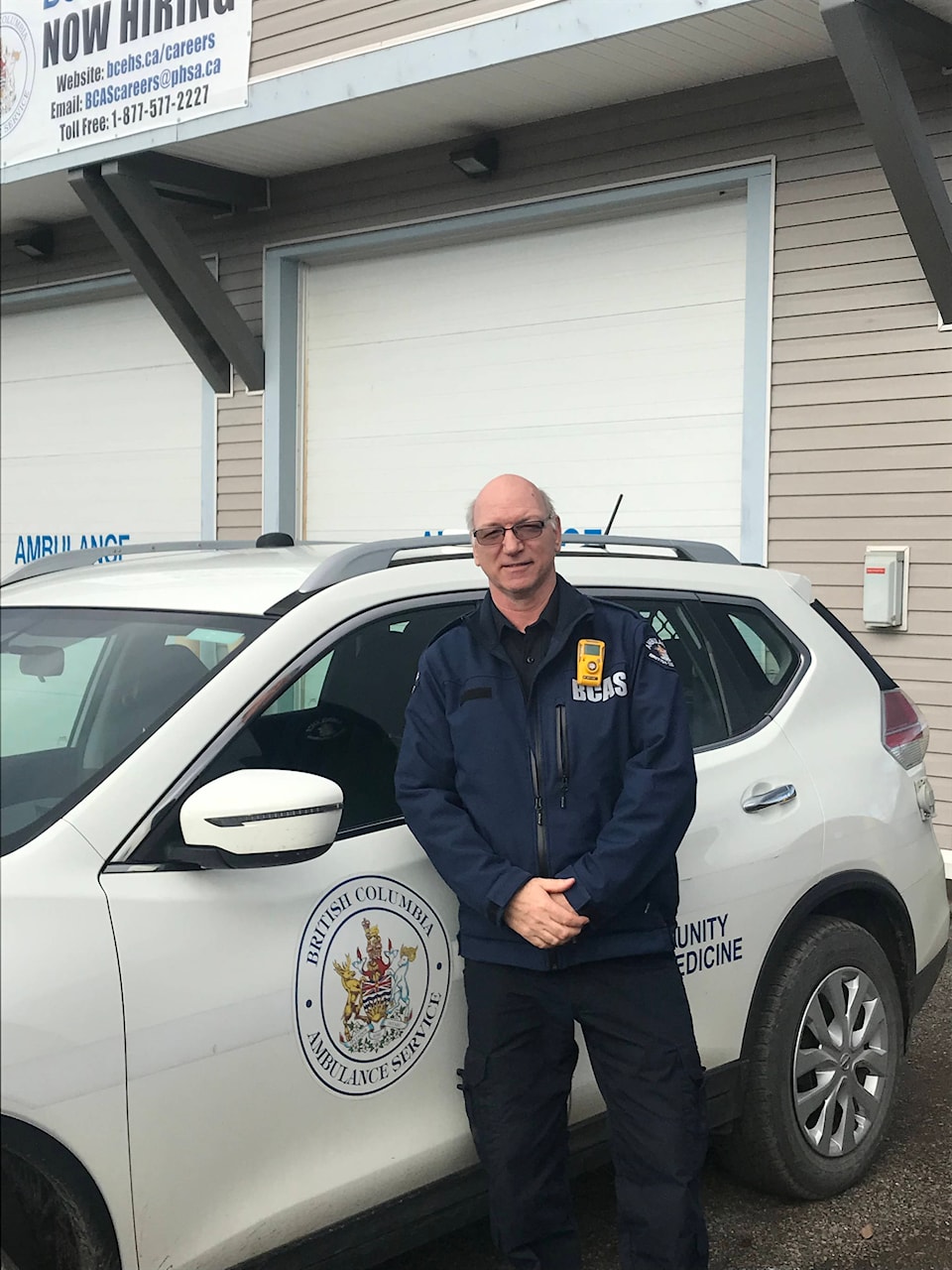Home visits and public workshops are the cornerstones of a provincial ambulance service program emphasizing preventation as a way of avoiding or reducing emergency responses resulting in transport to an emergency room or health care facility.
In Houston it takes the form of one BC Ambulance Service community paramedic, Tom Stringfellow, who does wellness checks, medication checks and general health monitoring of people in their homes as well as conducting healthy living workshops in schools or other public settings.
Catherine Scott, who manages the ambulance service’s community paramedic program in the region, cites a number of reasons for the program which got underway in 2015 and which came to Houston two years ago.
“For people with chronic conditions, for the elderly, regular visits by a community paramedic in their homes means they’re keeping in touch,” she said.
And thanks to community paramedic training, heart rates can be monitored and IVs given, Scott added.
It all fits with the objective to keep on top of a home-bound person’s condition so that the person does not have a sudden health crisis requiring emergency transport.
And that reduces the number of emergency calls needed and resulting demands on the ambulance system and health care facilities, Scott continued.
BC Ambulance statistics for the past three years indicate there’s an average of one 9-1-1 call a day in the Houston area.
There’s also the human factor, Scott adds, in having a paramedic conduct a home visit.
“For some people, those who live alone, it may be the only visit they receive in awhile,” Scott noted. “Just to have a conversation, that’s huge. Sometimes that can just make a person feel better.”
Overall, she adds, there’s a benefit in helping a person stay in their own home in familiar surroundings.
Community paramedics also receive training in end-of-life care for palliative patients who prefer to stay at home.
Aside from home visits, community paramedics venture out into the community conducting healthy living workshops which have the broad objective of establishing lifestyles and habits that will also one day reduce calls for emergency service.
“Schools, community centres, we can go where we’re asked,” said Scott.
Community paramedics will also provide cardiopulmonary resuscitation (CPR) to citizens who can then aid with an emergency until paramedics arrive.
Scott also notes that community paramedics don’t work in isolation and connect closely with physicians who keep tabs on their home-bound patients and with other health care professionals.
“We find that people like to work with a local health care team,” she said.
That’s a sentiment shared by staffers at Northern Health’s Houston Health Centre.
“The program is a valuable service that helps patients be supported in their own homes, particularly those with chronic diseases, and for whom the service allows better connection to the broader community healthcare team, and encourages them to maintain or improve their health and wellness,” said Cormac Hikisch, the health authority’s health service administrator for the Bulkley Valley.
There are other practical reasons behind having community paramedics in smaller communities, says Shannon Miller who speaks for the ambulance service.
Because many paramedic positions in smaller communities are part time, taking on community paramedic hours can stabilize the paramedic complement.
“To stabilize the staffing means it could benefit the community if a paramedic was fully employed (with additional community paramedic hours) and stayed in the community longer,” she says.
But Miller notes that a regular paradmedic needs additional training in order to work community paramedic shifts.
Houston is budgeted for two part time community paramedic positions with one now vacant because of a leave.
The immediate goal is to staff that vacant position as soon as possible.
And in Houston, Stringfellow, the one community paramedic on duty, is also doubling, for the moment, as the ambulance station’s unit chief.
The station has an approved complement of 12 paramedic positions, all part time.
A contract just signed between the union representing paramedics and the ambulance service could, based on an analysis of activity and needs, result in a full time position being created, said Miller.
“This is the stabilization BC Emergency Health Services is creating in terms of jobs and paramedics in rural and remote communities,” she said.
